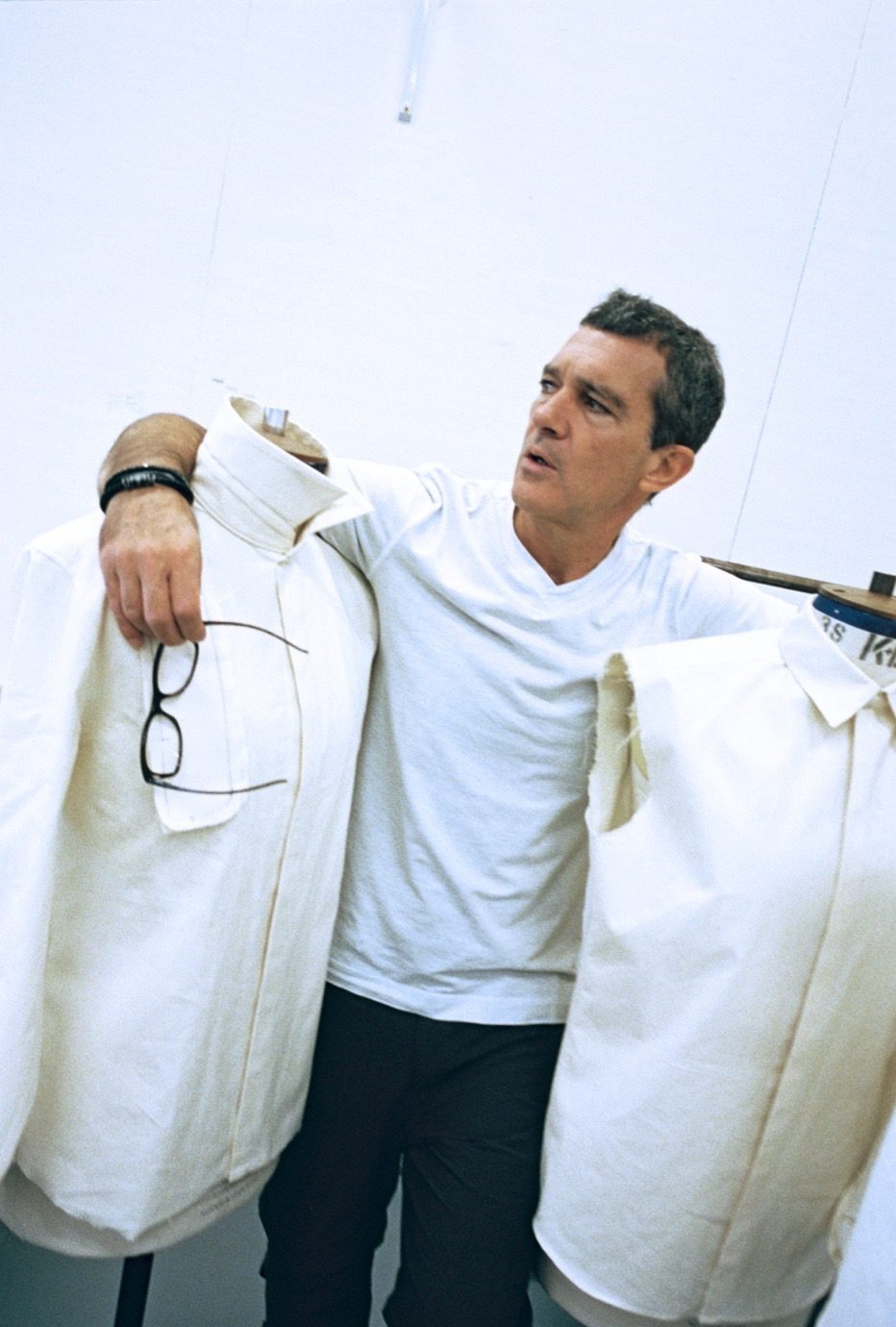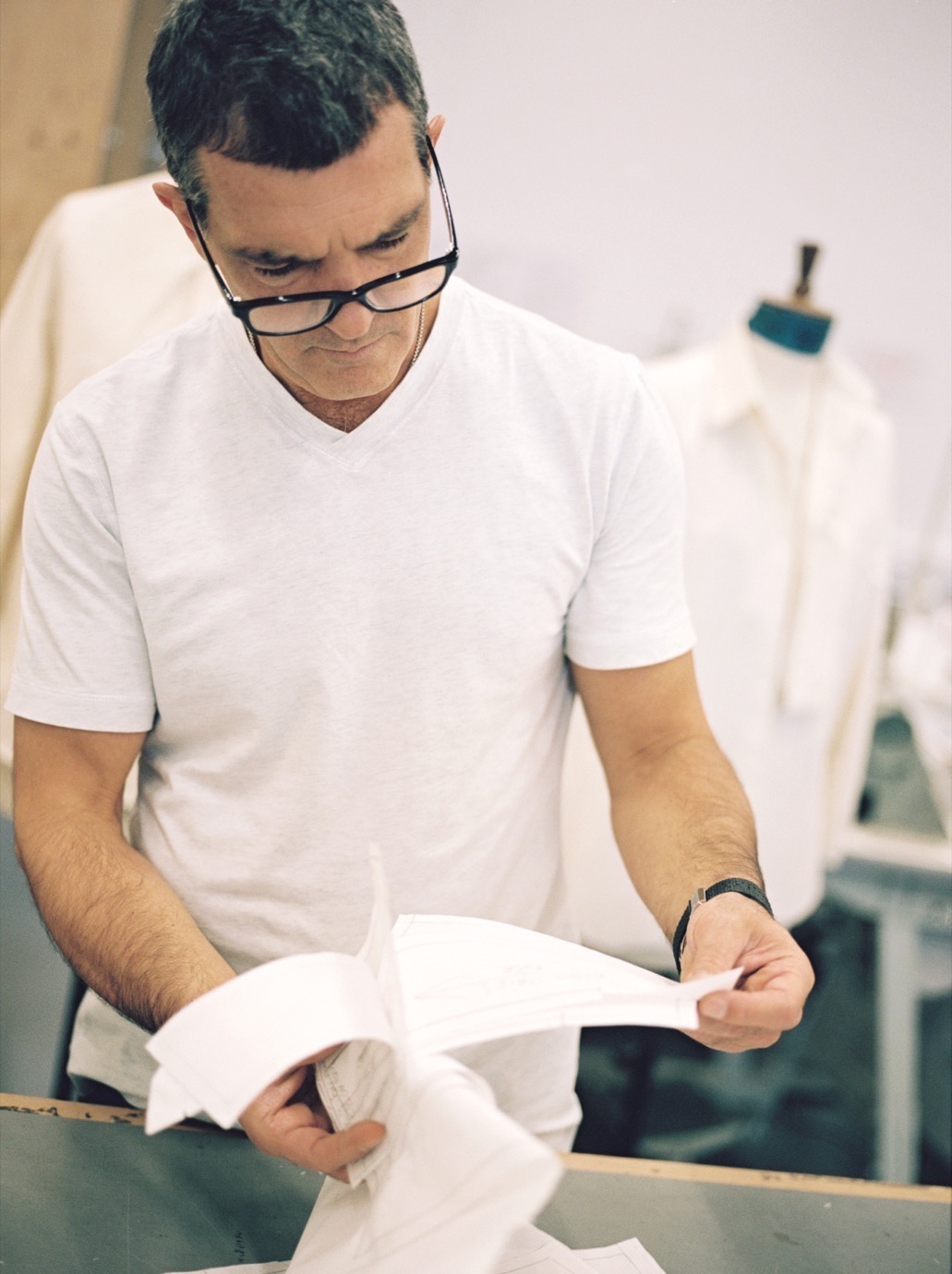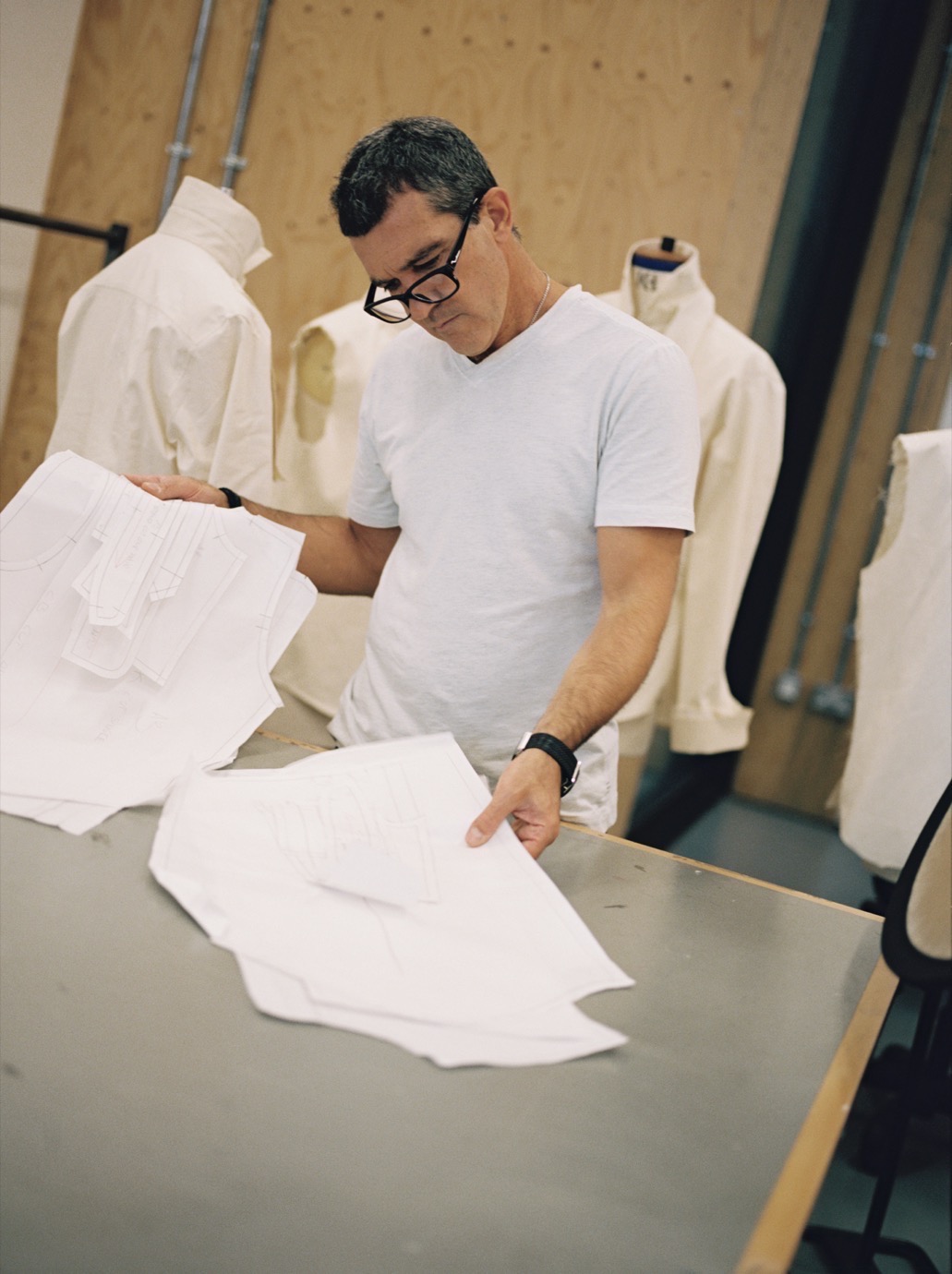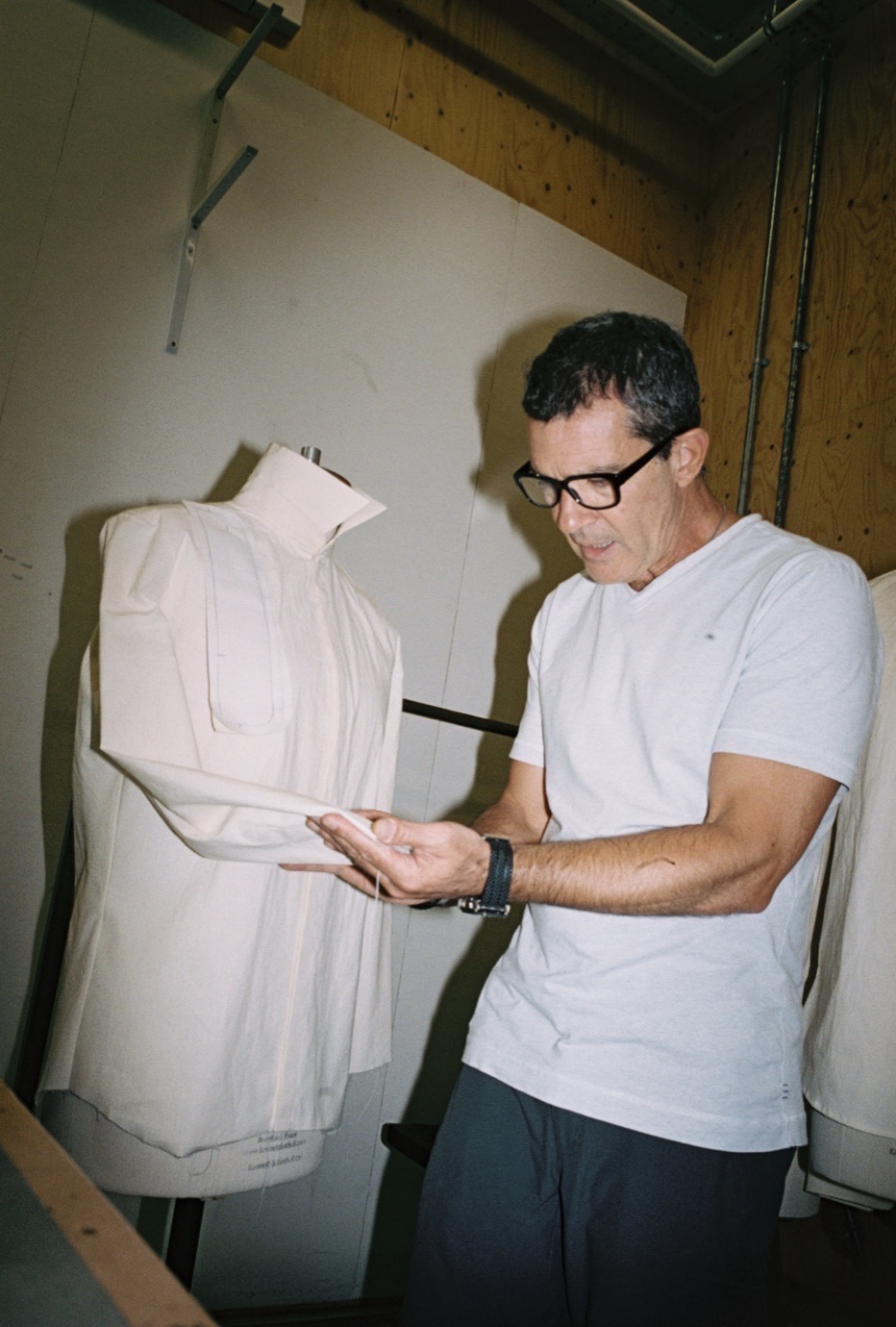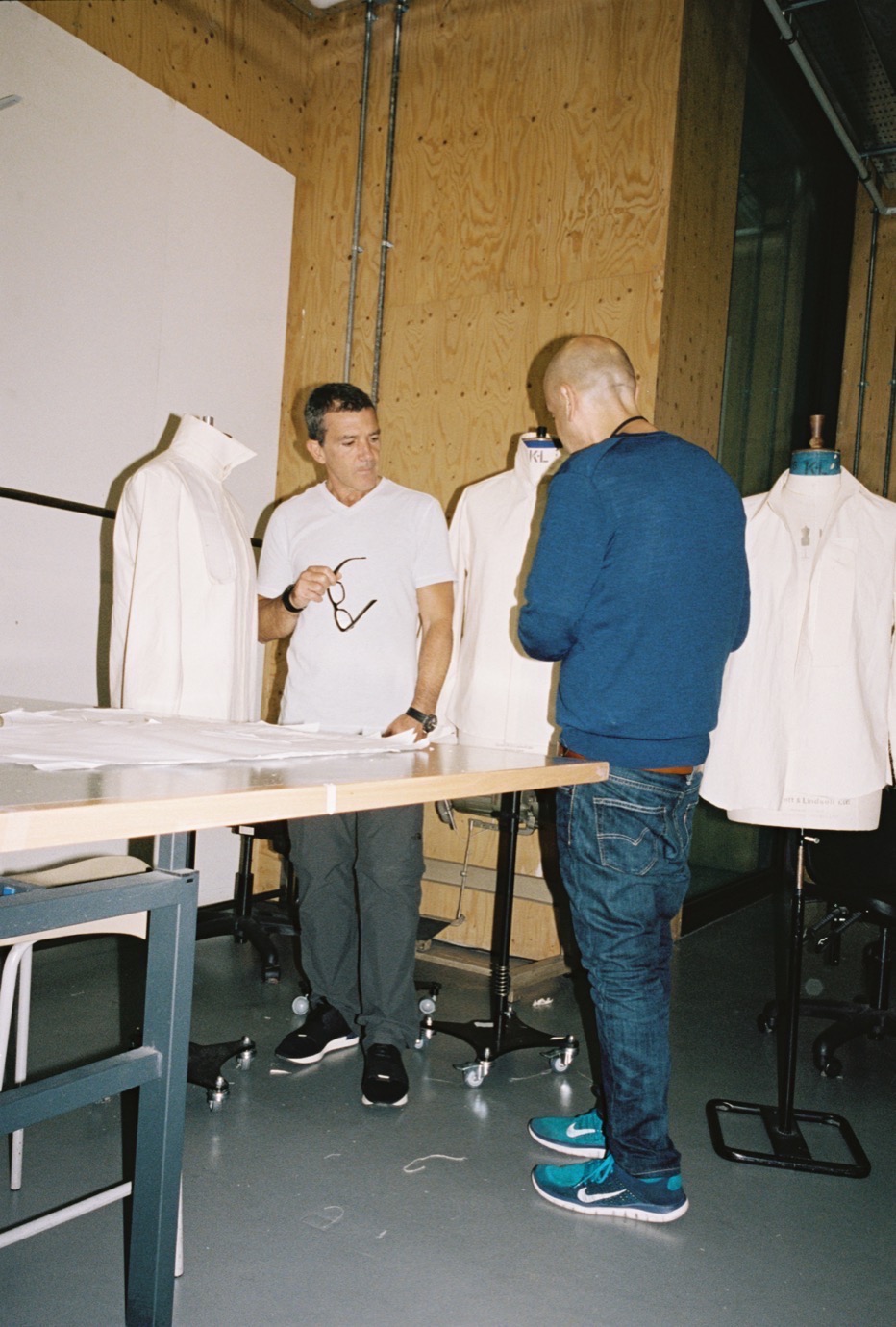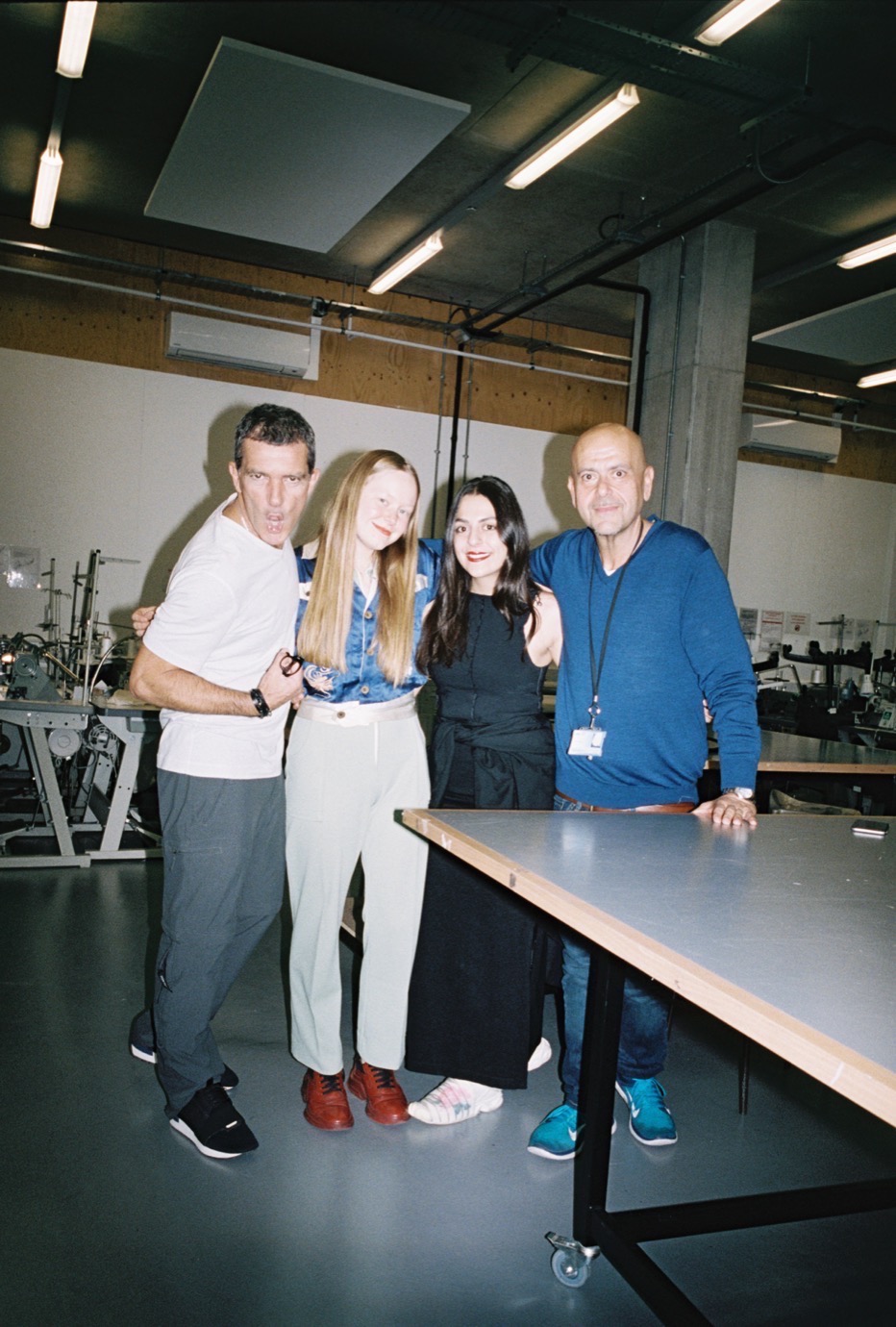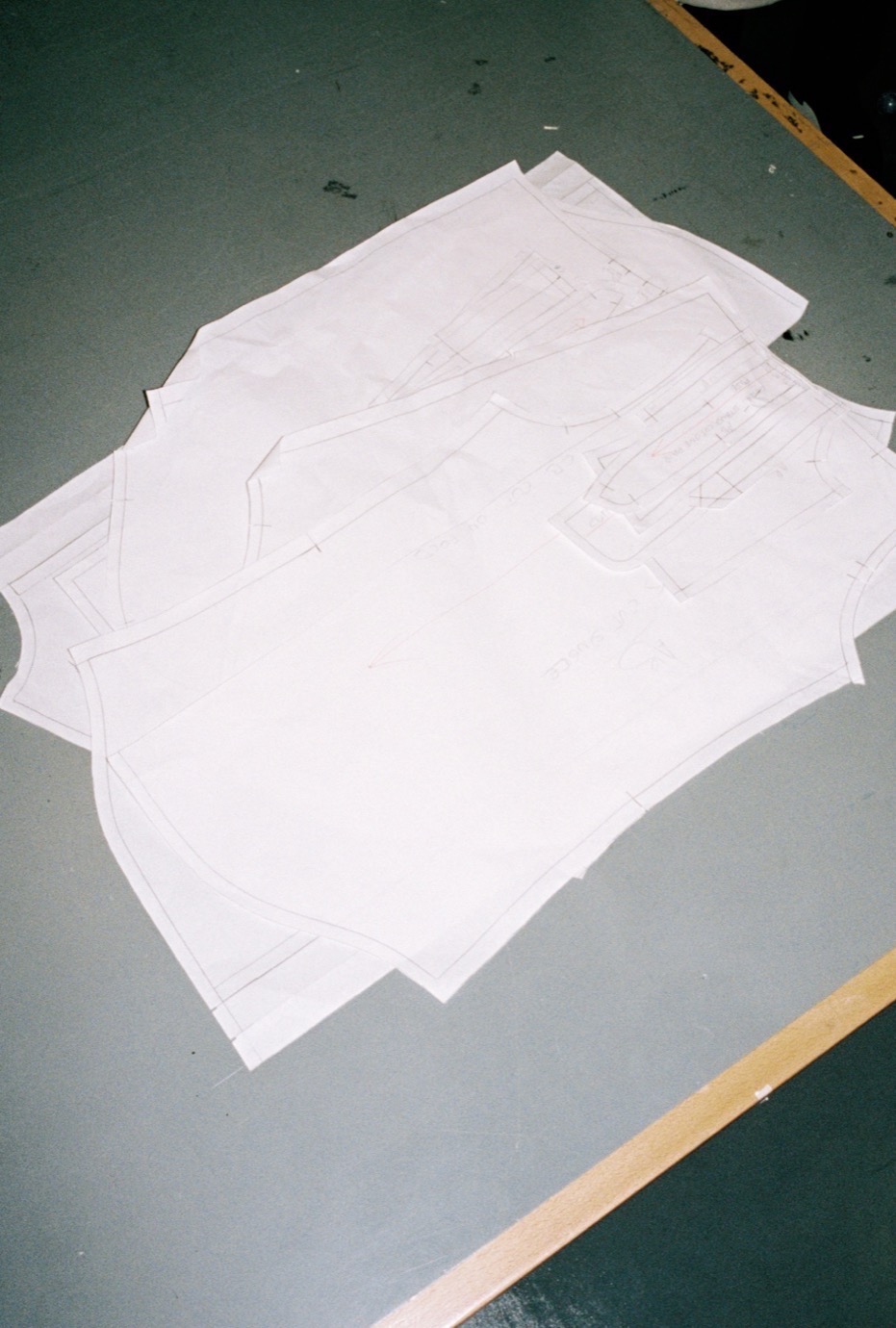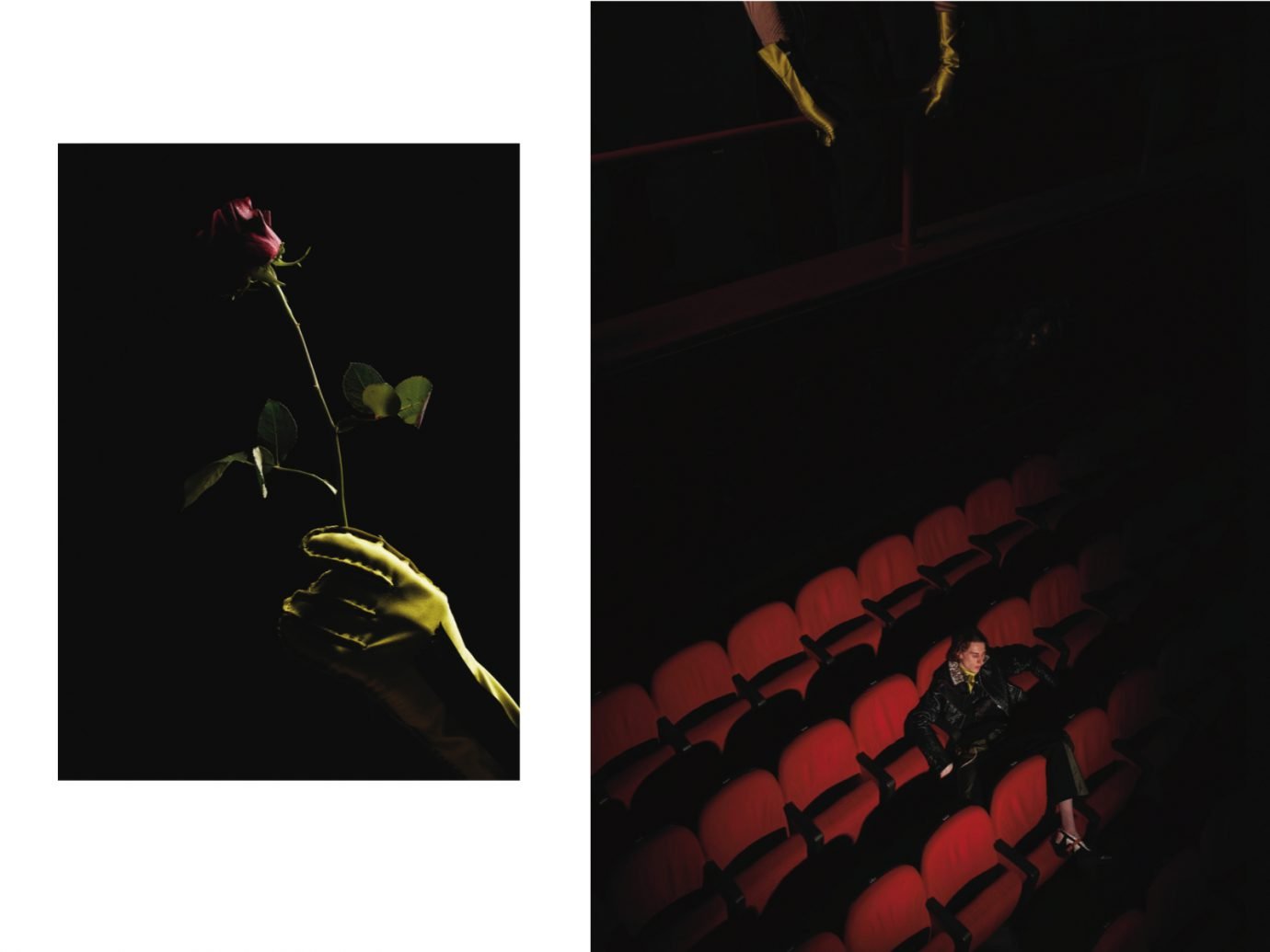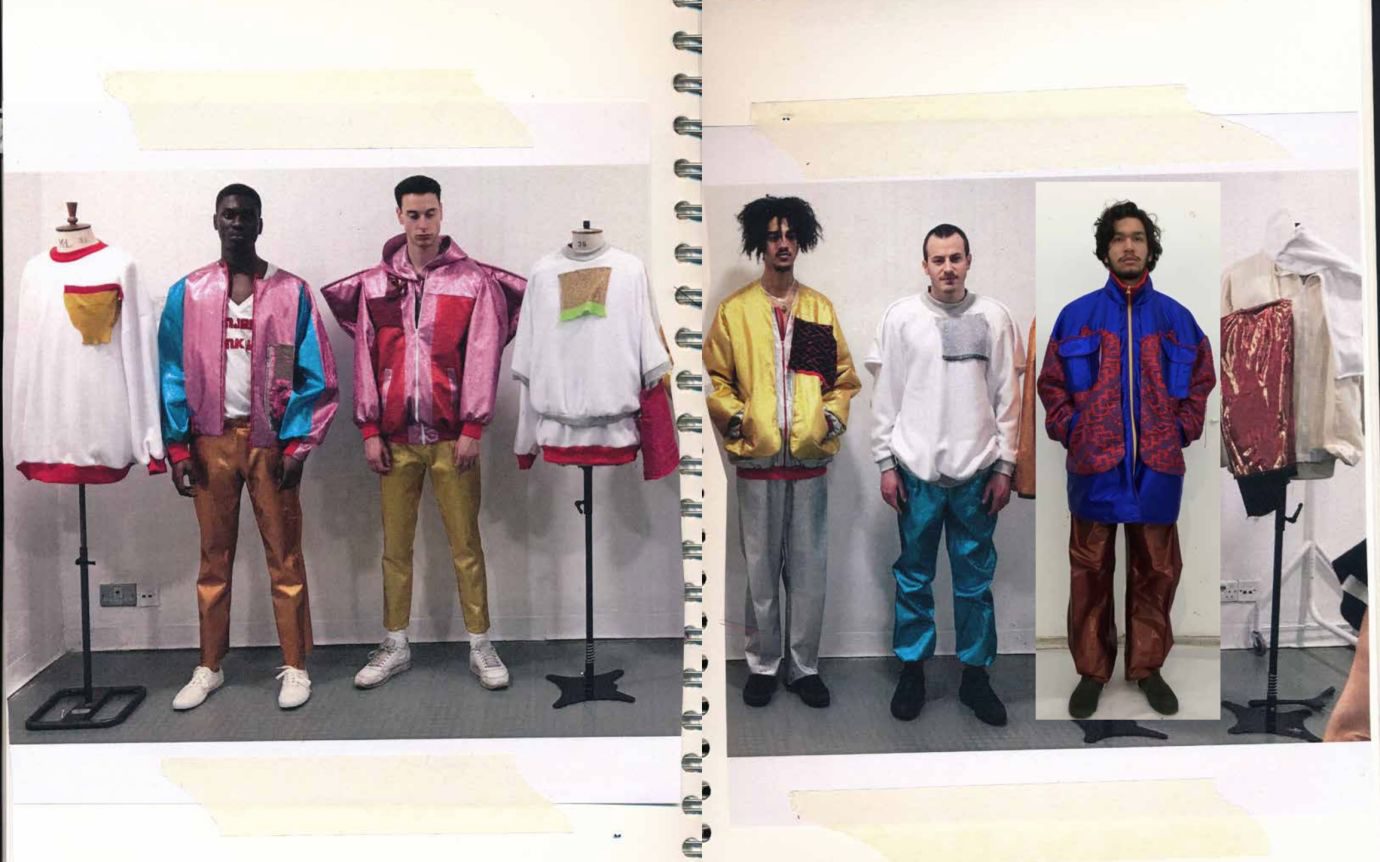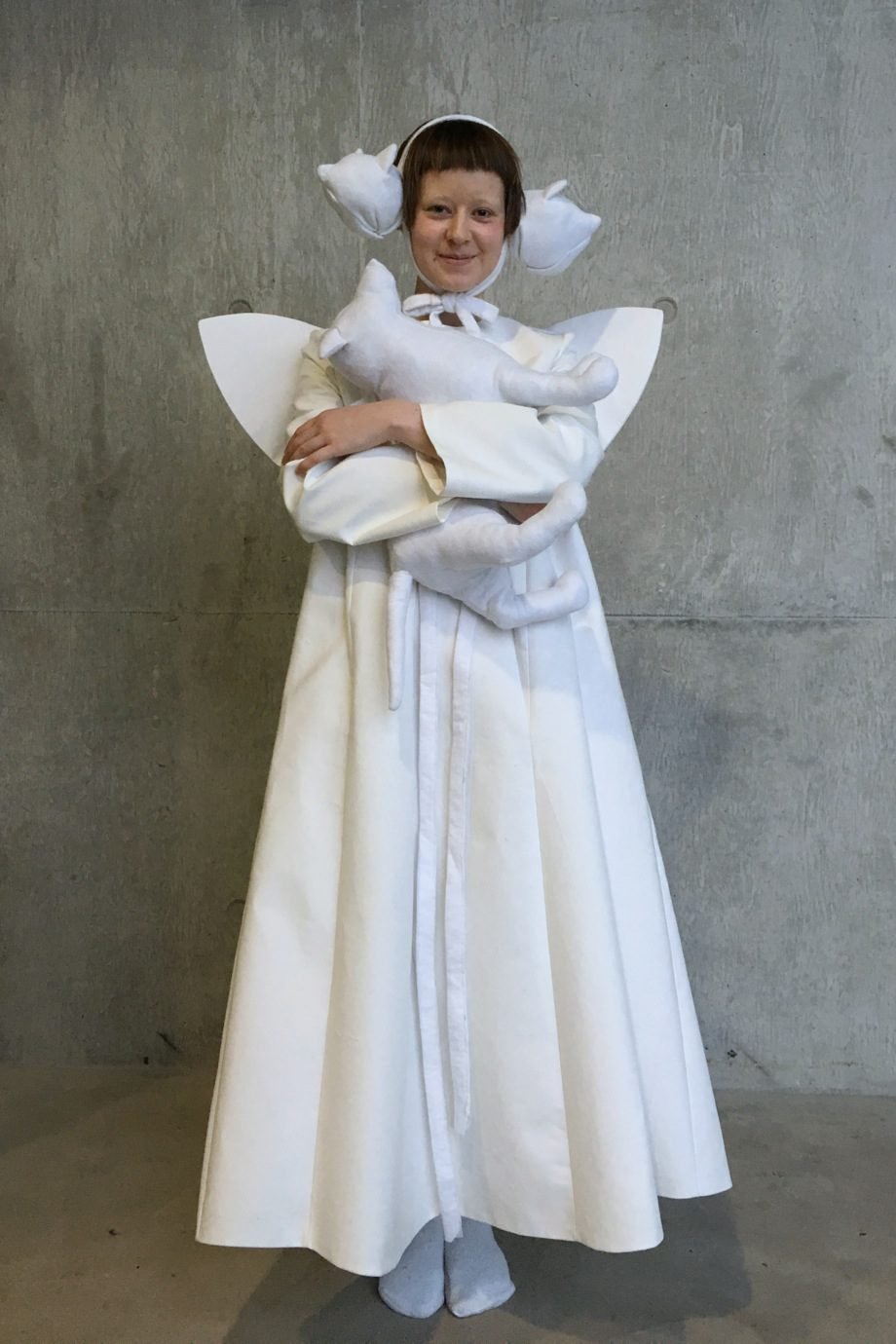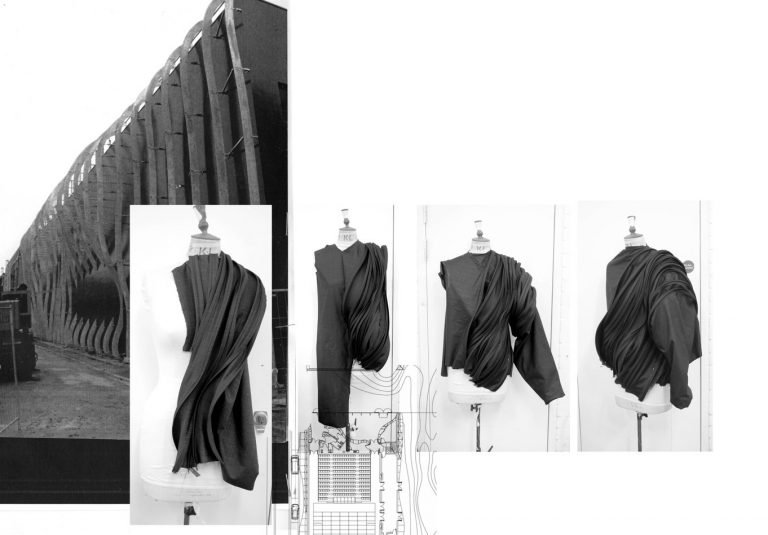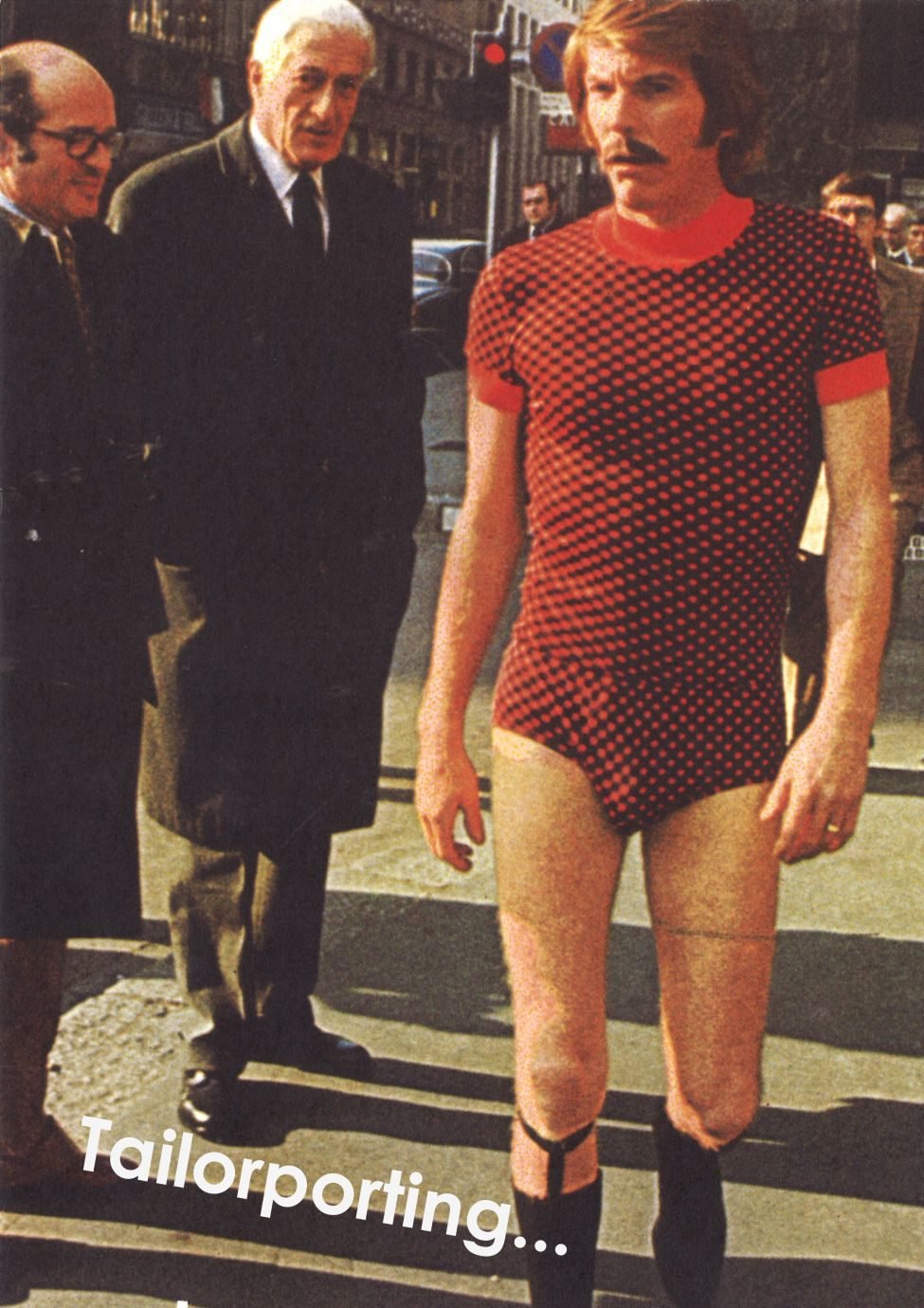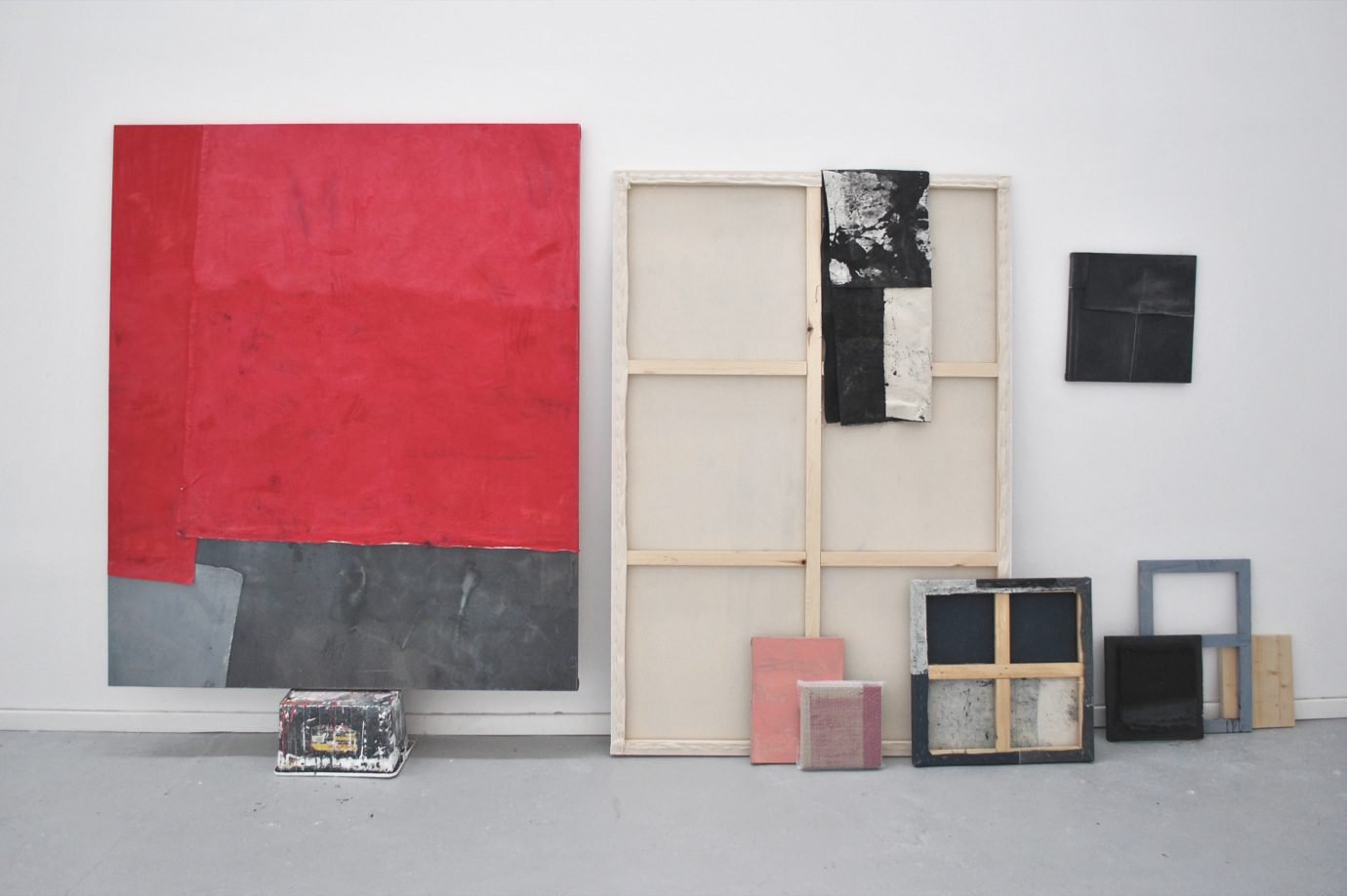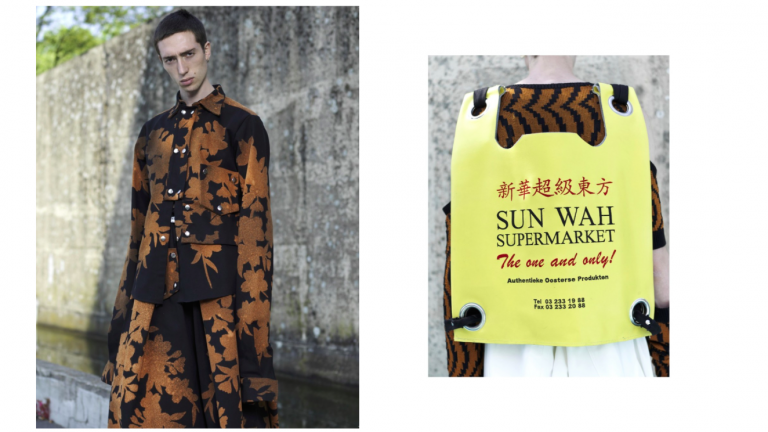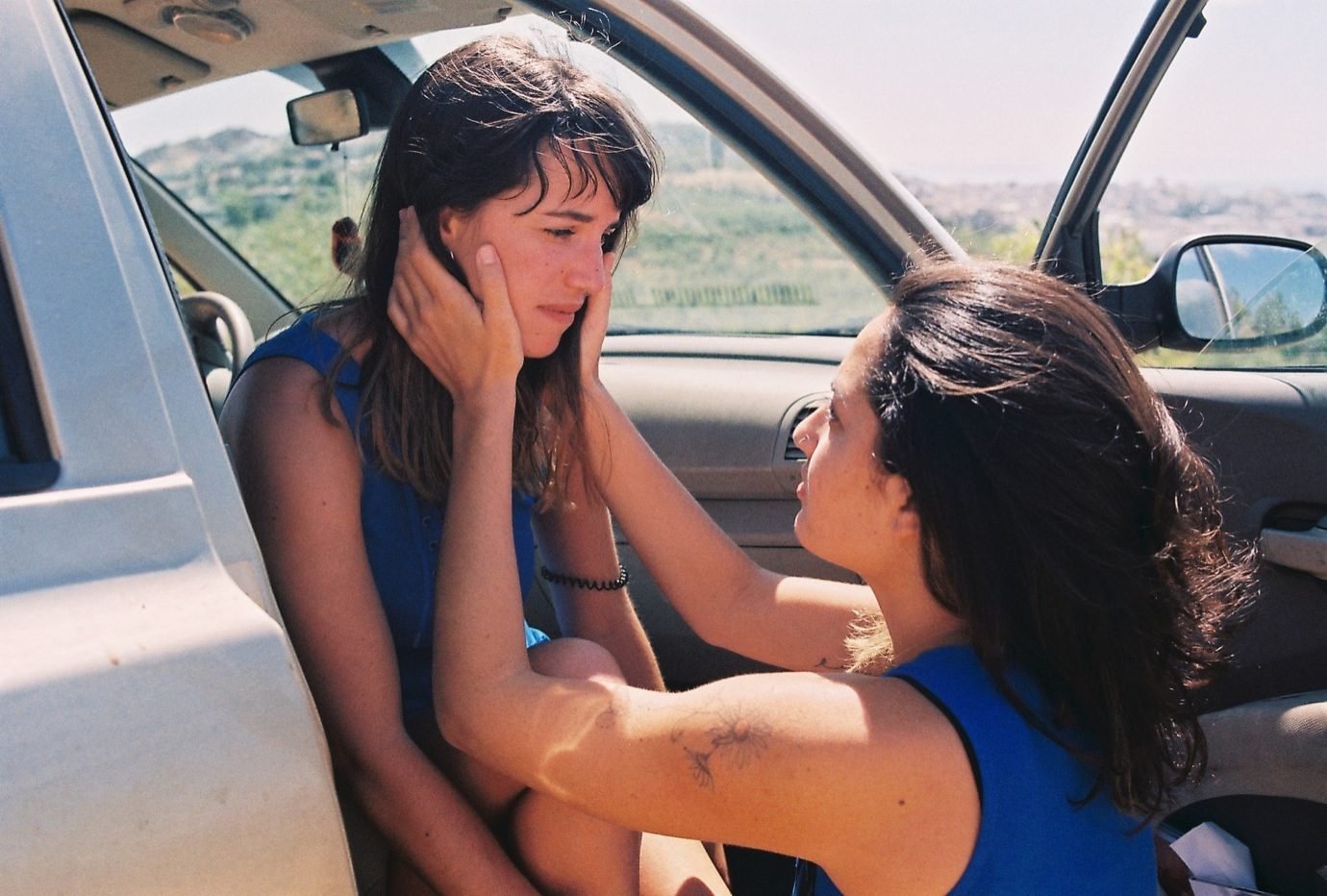AB: Absolutely. You know, I was born where Picasso was born. Before he got into abstraction, he was figurative. He knew how to draw…
1G: He could draw perfectly…
AB: Perfectly! And then he could just decompose the pattern and go: “This is the way I see the world, how I see shapes and people.” This is pretty much the same. So the reason that I am here is because of respect. Respect for the people who do this. Admiration. When you see how difficult the work actually is… Believe me, it is more difficult to play with a sewing machine than to drive a Ferrari… It is! Your fingers are there, and suddenly… so suddenly… everything goes trrrrrrrrr! And it turns. The other day I was watching the documentary Dior and I, and you see the atelier and how they work. You know, these people are not the artist, but they make the artist shine, because of how they finish everything – fifteen people around one skirt, putting on beads… Then you understand.
1G: They make the fabric as well – everything is non-existent before.
AB: Exactly! You understand it is a collective art – like movies. I directed two movies, and I know that you cannot do it by yourself. You need a department of wardrobe, of photography, of sound… And they all need to be on the same boat. And you have to accept things. That dress was blue in your mind, and suddenly the costume guy comes and says: “No, look at this green!” And if you are open, you let people participate – that is an act of directorial art, in a way. And I think that fashion is basically the same – it’s about how to direct a design team. And of course if you are a genius, you are going to surprise even your own atelier. It’s been truly magic for me here. It’s not possible that when I go to the machine it does CLACK and a pleat into place! But it does. It’s beautiful. I feel like a little kid with new shoes. But I have a long way to go, years of experience to build up.
“THIS IS NOT A TAILORING SCHOOL – THEY PREPARE PEOPLE FOR CREATIVITY”
1G: As an actor, when you’re developing a role, costume must be a very big part of that whole experience?
AB: You have no idea how important that is. It can determine your character; it can take you from one direction to another. Sometimes the character is not so explosive, it’s not Zorro; it doesn’t have a cape with a mask and a hat, you know. Which is very complicated too – Zorro was actually on the cartoon strips in the New York Times, and the guy who created him didn’t think that a sword man needed space to see; you cannot see the sides with a hat like this! The woman who did the outfit for the movie had to sort out all these things. It’s very important to feel comfortable. Comfortable shoes for me are very important when I do theatre. For whatever reason, I need to feel very attached to the ground; I need to feel that my feet are actually there.
1G: Do you think your acting career goes hand in hand with what you intend to do with clothes?
AB: It does. Because in reality, you know, the world is a theatre and we all play characters. And what you wear is what you want to be.
1G: What would you like to focus on in your work?
AB: There is one garment that I love that was lost in menswear a long time ago, and I would like to experiment with it: the cape. Capes in the winter, in places like this… I think they have incredible possibilities. They’re very comfortable. And especially nowadays every place has heating, and it’s not like in the old days when inside was almost as cold as outside, so people had to be properly layered. Now, in winter time, you could just wrap yourself up in a cape, it’s so easy! CLACK! There are all these varieties of capes. For example, in the time of Charles the Third in Spain, capes were an instrument to kill – and to cover yourself. People used to do this (makes Zorro move) and nobody would know who you were. So they used to cut the capes and do these short capes, because it was forbidden by the law to wear long capes at night. You can experiment with colours, textures, you can do a number of things. And it is in a way so logical, coming from Zorro! (laughs)
1G: Yeah, I’ve never heard anyone say they wanted to rework the cape for men!
AB: In Spain there are still places where there are clubs of people who love to wear capes. The shape has almost the same shape as the capote for bullfighting, in beautiful pink silk, with yellow or blue in the back. For me, it’s actually easier than a coat, you walk into a place and you just BOOM! throw it off. It depends on the materials that are used, but now there are unbelievable materials!
1G: If you do it in nylon you could make the whole cape fold into a pocket…
AB: That’s one of the things I am learning with these guys too: fabrics. Yesterday we went to two stores in Soho… Wow! I loved it. These plastics, these new things you see… Right now I have to hold the horses and say: “My first design… I’m not going to go crazy. I’m going to do the same design that I did first time, but with a couple of new details.” I have to be clear that this is my path, and I’m going to do it step by step. It’s going to take me years to get the knowledge I am searching for with a certain level of security and credibility for myself and the people I am working with – and the public.
“FASHION IS A COLLECTIVE ART, LIKE MOVIES”
1G: So you’re working with a couple of the menswear students, doing the same projects simultaneously?
AB: Yes, and my girlfriend Nicole is here too.
1G: Is Louis very strict with you? He’s known to be very strict…
Nicole: No, he’s very nice!
Louis Loizou: I am team Nicole though… I’m not on Antonio’s team.
1G: So how are you enjoying it Louis?
LL: I like teaching, and it’s rewarding to see students learning and progressing. Even the small steps – every day you learn something new. The minute you stop learning you’ve kind of given up.
AB: I just got this idea to burn a fabric, but they don’t allow me to do it!
1G: Hahaha, the fire alarm will go off instantly in this building!
Chris New (head of BA Menswear): Can you hide his lighter please??

